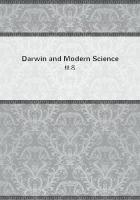And the Miser is as good as a Scotch Trapbois, till he becomes homicidal, and then one fails to recognise him unless he is a little mad, like that other frantic uncle in "The Merry Men." The scenes on the ship, with the boy who is murdered, are better--I think more real--than the scenes of piratical life in "The Master of Ballantrae." The fight in the Round House, even if it were exaggerated, would be redeemed by the "Song of the Sword of Alan."As to Alan Breck himself, with his valour and vanity, his good heart, his good conceit of himself, his fantastic loyalty, he is absolutely worthy of the hand that drew Callum Bey and the Dougal creature. It is just possible that we see, in "Kidnapped," more signs of determined labour, more evidence of touches and retouches, than in "Rob Roy." In nothing else which it attempts is it inferior; in mastery of landscape, as in the scene of the lonely rock in a dry and thirsty land, it is unsurpassed. If there are signs of laboured handling on Alan, there are none in the sketches of Cluny and of Rob Roy's son, the piper. What a generous artist is Alan! "Robin Oig," he said, when it was done, "ye are a great piper. I am not fit to blow in the same kingdom with you. Body of me! ye have mair music in your sporran than I have in my head.""Kidnapped," we said, is a fragment. It ends anywhere, or nowhere, as if the pen had dropped from a weary hand. Thus, and for other reasons, one cannot pretend to set what is not really a whole against such a rounded whole as "Rob Roy," or against "The Legend of Montrose." Again, "Kidnapped" is a novel without a woman in it:
not here is Di Vernon, not here is Helen McGregor. David Balfour is the pragmatic Lowlander; he does not bear comparison, excellent as he is, with Baillie Nicol Jarvie, the humorous Lowlander: he does not live in the memory like the immortal Baillie. It is as a series of scenes and sketches that "Kidnapped" is unmatched among Mr.
Stevenson's works.
In "The Master of Ballantrae" Mr. Stevenson makes a gallant effort to enter what I have ventured to call the capital of his kingdom.
He does introduce a woman, and confronts the problems of love as well as of fraternal hatred. The "Master" is studied, is polished ad unguem; it is a whole in itself, it is a remarkably daring attempt to write the tragedy, as, in "Waverley," Scott wrote the romance, of Scotland about the time of the Forty-Five. With such a predecessor and rival, Mr. Stevenson wisely leaves the pomps and battles of the Forty-Five, its chivalry and gallantry, alone. He shows us the seamy side: the intrigues, domestic and political; the needy Irish adventurer with the Prince, a person whom Scott had not studied. The book, if completely successful, would be Mr.
Stevenson's "Bride of Lammermoor." To be frank, I do not think it completely successful--a victory all along the line. The obvious weak point is Secundra Dass, that Indian of unknown nationality; for surely his name marks him as no Hindoo. The Master could not have brought him, shivering like Jos Sedley's black servant, to Scotland.
As in America, this alien would have found it "too dam cold." My power of belief (which verges on credulity) is staggered by the ghastly attempt to reanimate the buried Master. Here, at least to my taste, the freakish changeling has got the better of Mr.














